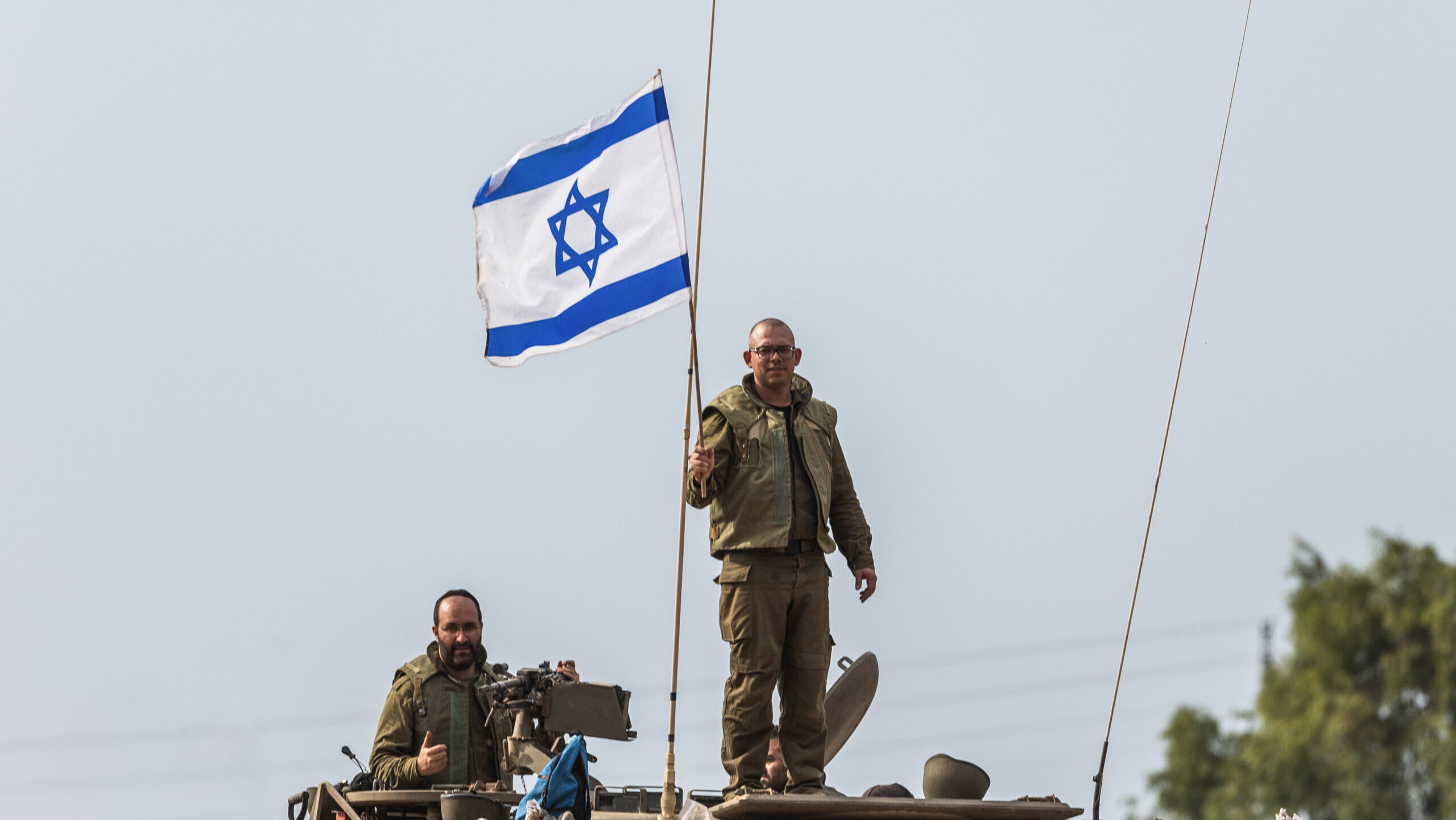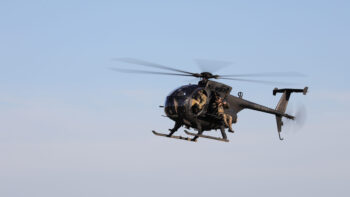
Israeli artillery forces are deployed near the Israel-Gaza border. Fighting between Israeli soldiers and Islamist Hamas militants continues in the border area with Gaza. (Ilia Yefimovich/picture alliance via Getty Images)
JERUSALEM and WASHINGTON — With active fighting still ongoing along the Israeli-Gaza border, it is still too early to know how exactly Hamas pulled off the biggest assault on Israel in 50 years, killing hundreds and capturing dozens of hostages. But analysts agree that the Israeli security establishment is going to have to ask itself hard questions about why it didn’t see the assault coming, and whether its bet on high-tech defenses is enough.
“I would imagine there will be a very, very major and deep-rooted inquiry,” Jonathan Spyer, director of research at the Middle East Forum told Breaking Defense. “And I assume heads will roll, because what just happened is a very, very major event.”
The attack began in the early hours of the morning on Oct. 7 with rocket fire, including barrages directed at Jerusalem, a rare long-distance target for Hamas. Under cover of the rockets, Hamas neutralized observation points along the border, according to video the terrorist group posted on social media, and then cut holes in the border fence as part of an assault that included bulldozers and paragliders. The group then attacked more than 20 Israeli communities, according to an IDF briefing.
By the end of the first day of fighting more than 3,000 rockets had been fired at Israel, an assault that has continued more than 48 hours later. Israeli counterattacks are reported to have killed hundreds in Gaza. One soldier who spoke with Breaking Defense on Oct. 8 said this was his generation’s version of the Yom Kippur War, the conflict that began with an intelligence failure and surprise attack on Israel in 1973 — and set the course of Israel’s defense posture for decades to come.
It’s a stunning failure of Israel’s intelligence apparatus and defense strategy, which has largely been built around using technology to check Hamas. The failure of intelligence to learn of the attack, and failures at the tactical level to respond to the attack quickly, raise questions about Israel’s multi-year Momentum plan and the technology that has been pushed to frontline forces.
The overall theme in Israel in the last several years has been investment in technology and digitization for warfare. This runs the gamut from laser defenses, to the use of sensors that are supposed to provide intelligence in real time to inform decision making rapidly from border areas. In addition, Israel has increased its air defense systems, so that Iron Dome, David’s Sling and Arrow make up a multi-layered defense that can stop missiles fired from Gaza or elsewhere. Israel has also concentrated on threats from Iran, and Iranian-backed groups such as Hezbollah, that exist in Lebanon and Syria, keeping Gaza on the back burner.
Still, along the border, Israeli precautions include a “smart” security fence along the border that detects underground threats, such as tunnels. The border also includes aerostats for observation and detection, and Israel has used drone swarms and AI-driven technology in past conflicts in Gaza. Unmanned robots were also deployed along the border.
And yet, as advanced as these systems are, they largely appear to have been overcome by Hamas on Oct. 7. From observation towers to sensors, and protection systems for armored vehicles, Hamas was able to strike at numerous points and infiltrate Israeli military posts.
In the short term, the fight to push Hamas militants out of Israeli territory and recovering hostages is the biggest focus. But longer term, the question becomes about lessons learned, and if the Israeli reliance on technology was bad gamble. Analysts, however, say it’s not about technology, it’s about people.
Bilal Saab, Senior Fellow and Director of the Defense and Security Program at the Middle East Institute, put it bluntly: “Over reliance on tech always has its drawbacks. But the problem here wasn’t tech. There was a failure of imagination, first and foremost, and total disrespect of the opponent.”
Similarly, Byron Callan, an analyst with Capital Alpha Partners, warned about jumping to conclusions about technology when people are involved.
“We don’t know if there was human intelligence warning of an impending attack, and warnings can be ambiguous. This doesn’t mean that technical surveillance in the form of space [and] air surveillance, signal intelligence, and cyber-network penetration has been devalued,” Callan wrote in a note to investors. “Rather, it again underscores the value of human sources and human assessments. It also means that the risk of military surprise is likely to be an enduring factor in the 2020s.”
The Middle East Forum’s Spyer called the attacks a failure of intelligence across the board, at both the strategic and technical level.
On the tactical level, Hamas “succeeded in knocking out the monitoring system at an early stage, using drones and weapons dropped from drones. There were facilities close to the border responsible for watching real time developments, and these were destroyed and disabled … I‘m sure there will be ways put in place to make sure that doesn’t happen again.”
The bigger issue he see is the “complete failure of analysis and assessment” at the strategic level, in terms of Israel’s understanding of what Hamas’ goals and capabilities are. Since Hamas took over as a governing faction in Gaza, Spyer said, Jerusalem has treated them as if they are more interested in ruling than in fighting Israel — an assessment that now appears to have been incorrect.
How the Army plans to make enterprise-wide training a reality
In addition to training, the Army’s $3.5B program called Warfighter Training and Readiness Solutions will bring an enterprise approach to the sustainment and maintenance of training systems.


























